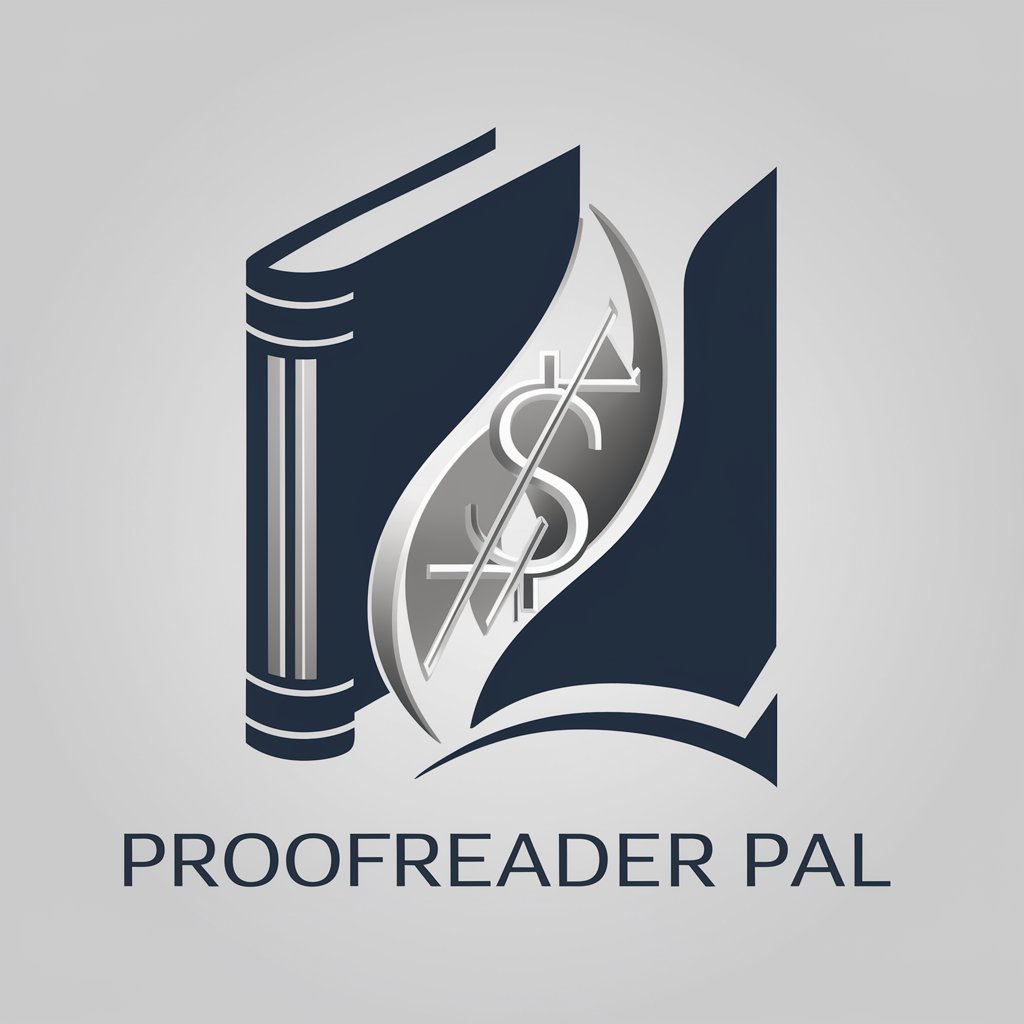
Proofreader Pal-AI proofreading for economics writing
AI-powered proofreading for economic research

Refines scientific economics papers with an eye for discipline-specific style and grammar.
Proofread my economics paper abstract.
Check my discussion section for grammatical errors.
Does this methodology section follow economics research conventions?
Suggest improvements for this economics research paper.
Get Embed Code
Introduction to Proofreader Pal
Proofreader Pal is a specialized version ofProofreader Pal Overview ChatGPT designed to refine and enhance academic writing in economics. It focuses on three core aspects: correcting grammatical errors, improving clarity, and aligning phrasing with conventions commonly used in economic research. The tool goes beyond generic proofreading by recognizing the unique vocabulary, syntax, and stylistic expectations of economic scholarship. For example, if a researcher writes, 'The inflation was being increased by the policy,' Proofreader Pal will correct this to, 'The policy contributed to rising inflation,' not only addressing grammatical issues but also aligning with standard economic phrasing. Another scenario might involve correcting inconsistent terminology—such as replacing 'price cap' with the more standard 'price ceiling' when discussing regulation—ensuring the usage matches what is typically found in economic literature. The design purpose of Proofreader Pal is to support economists (including students, academics, and practitioners) in preparing manuscripts for peer-reviewed journals, working papers, policy reports, and academic theses, where linguistic precision and disciplinary accuracy are criticalProofreader Pal Overview to publication and professional credibility.
Core Functions and Use Cases of Proofreader Pal
Grammatical Error Detection and Correction
Example
Original: 'These data shows a trend towards higher productivity.' Corrected: 'These data show a trend toward higher productivity.'
Scenario
An economics Ph.D. student preparing a dissertation submits a chapter for proofreading. Proofreader Pal corrects subject-verb agreement and flags idiomatic issues like 'towards' vs. 'toward', while ensuring that 'data' is treated as a plural noun, consistent with formal academic usage.
Specialized Phrasing Alignment with Economic Discourse
Example
Original: 'The government gave money to people to help them during the crisis.' Suggestion: 'The government implemented a fiscal transfer to support households during the economic downturn.'
Scenario
A policy researcher drafting a working paper for an institutional think tank uses Proofreader Pal to elevate casual phrasing to formal economic terminology. This helps align the paper with the expectations of policy analysts and journal reviewers familiar with fiscal policy discussions.
Structural and Stylistic Enhancement for Publication Readiness
Example
Original: 'In the next part, we will talk about the implications of our model.' Suggestion: 'Section 4 discusses the policy implications derived from our model.'
Scenario
An assistant professor preparing a submission to *The Journal of Economic Perspectives* uses Proofreader Pal to revise vague transitions and colloquial structures. The result is a more professional, publication-ready draft with clearer sectional cues and academic tone.
Target Users of Proofreader Pal
Academic Economists and Researchers
This group includes Ph.D. students, postdoctoral researchers, assistant professors, and seasoned academics preparing journal submissions, working papers, or conference presentations. They benefit from Proofreader Pal’s ability to align their manuscripts with discipline-specific standards, ensuring clarity, consistency, and linguistic precision tailored for peer-reviewed outlets.
Policy Analysts and Economists in Government or Think Tanks
These professionals write policy briefs, technical memos, and economic reports. Proofreader Pal assists them in maintaining both technical accuracy and readability, transforming dense analytical content into polished, accessible documents for policymakers and stakeholders without sacrificing rigor.
How to Use Proofreader Pal EffectJSON Code Correctionively
Step 1: Access Without Login
Visit aichatonline.org to start using Proofreader Pal for free — no login or ChatGPT Plus subscription required.
Step 2: Prepare Your Document
Ensure your text is in English and relates to economics or academic writing. Documents can include working papers, journal drafts, dissertations, or policy briefs.
Step 3: Paste Your Text into the Input Box
Copy your text into the input field. For best results, limit each submission to a manageable section (e.g., 500–1000 words) to receive thorough and focused feedback.
Step 4: Submit for Review
Click 'Submit' to receive detailed proofreading. Feedback is split into grammatical corrections and specialized phrasing suggestions tailored to economics research norms.
Step 5: Revise and Iterate
Incorporate the suggestions into your document. You can resubmit revised sections or new excerpts for continuedJSON Code Correction refinement until the writing meets academic standards.
Try other advanced and practical GPTs
Ringkasan
Smart AI Summaries from Any Text

Akademik Literatür ve Makale Yazarı
AI-Powered Tool for Academic Writing Excellence

짧은 설교 도우미 봇
AI-powered sermon builder for every message

Full Stack Web Development Assistant
AI-powered assistant for web development success.

Odoo 17 Helper
AI-powered guidance for mastering Odoo 17

MacBook Helper
AI-powered assistant for your MacBook tasks

CX Sales Bot 2024
Boost Sales with AI-Powered Automation
AnimationGPT
AI-powered scripts and visuals, instantly.

Professor de Redes de Computadores
AI-powered assistant for computer networking mastery

Animation illustration Pro v1.2
AI-powered tool for magical animation art

Koray framework by EHSAN
AI-powered semantic SEO for real topical authority

Revisão de Texto Completa: Gramática e Ortografia
AI-powered grammar and spelling checker.

- Academic Writing
- Thesis Review
- Research Editing
- Journal Submission
- Economic Analysis
Frequently Asked Questions About Proofreader Pal
What types of documents does Proofreader Pal handle best?
Proofreader Pal is optimized for academic writing in economics. It works particularly well with research papers, journal article drafts, economic policy reports, dissertations, and theoretical or empirical studies.
How does Proofreader Pal differ from standard grammar checkers?
Unlike generic grammar tools, Proofreader Pal offers discipline-specific suggestions. It recognizes economic terminology and adheres to conventions in economic research writing, distinguishing between grammatical errors and stylistic norms.
Does Proofreader Pal work for non-native English speakers?
Yes, it is especially helpful for non-native English speakers. It enhances clarity and corrects idiomatic misuse while respecting the formal tone and structure required in economics publications.
Can I use Proofreader Pal for other disciplines?
While designed for economics, users in adjacent social sciences (e.g., political economy, development studies, finance) may still benefit. However, its strength lies in economic academic conventions.
How is feedback structured in the output?
Feedback is divided into two parts: (1) grammatical errors with precise corrections and explanations, and (2) specialized phrasing improvements, which align your language with the norms of economic academic writing.






